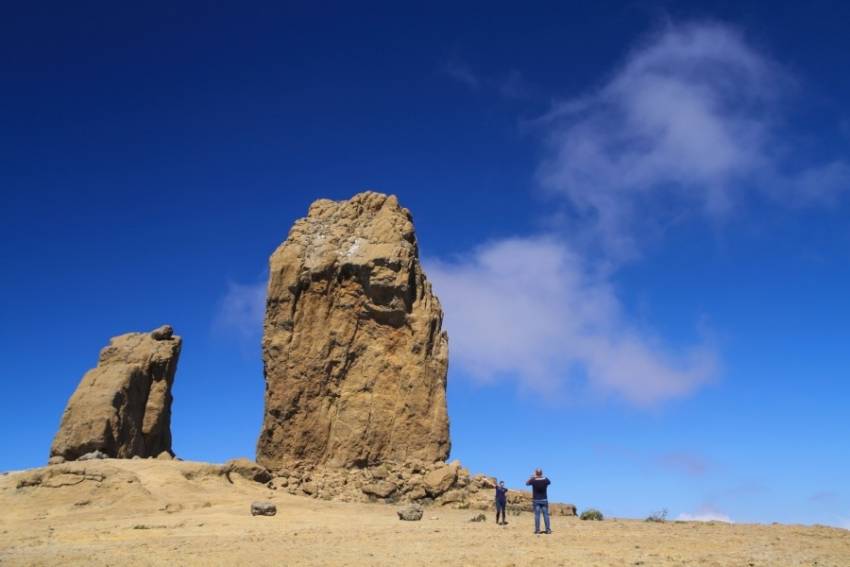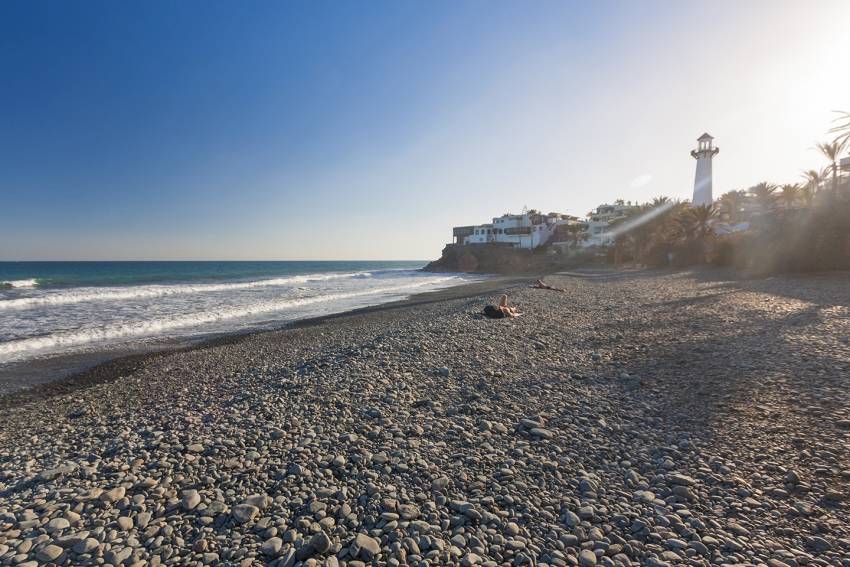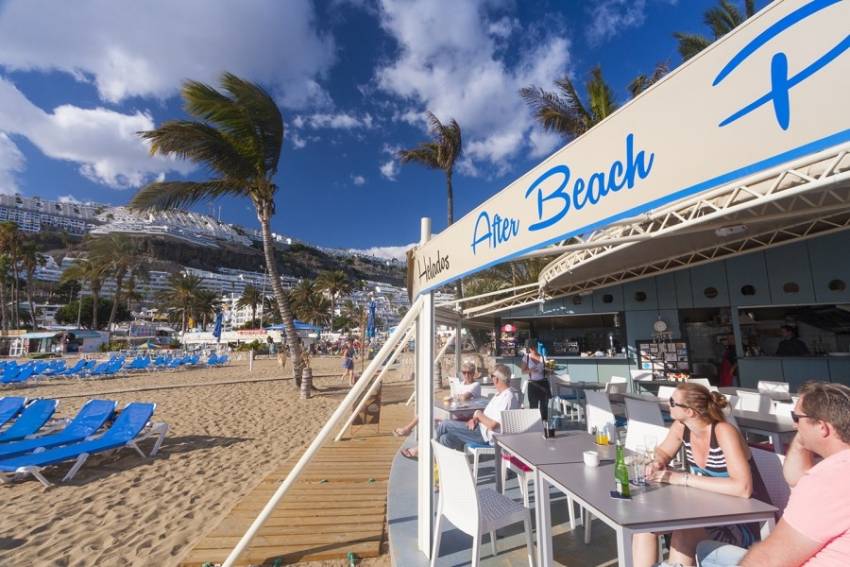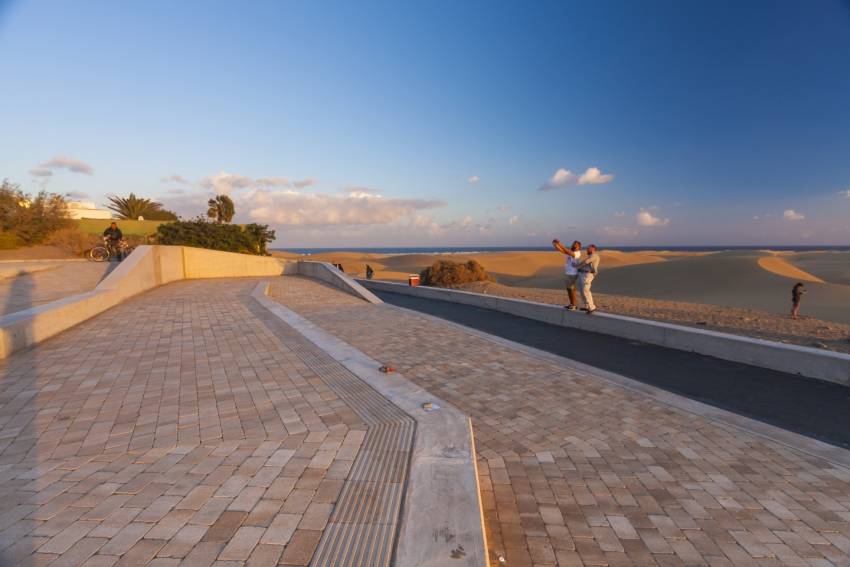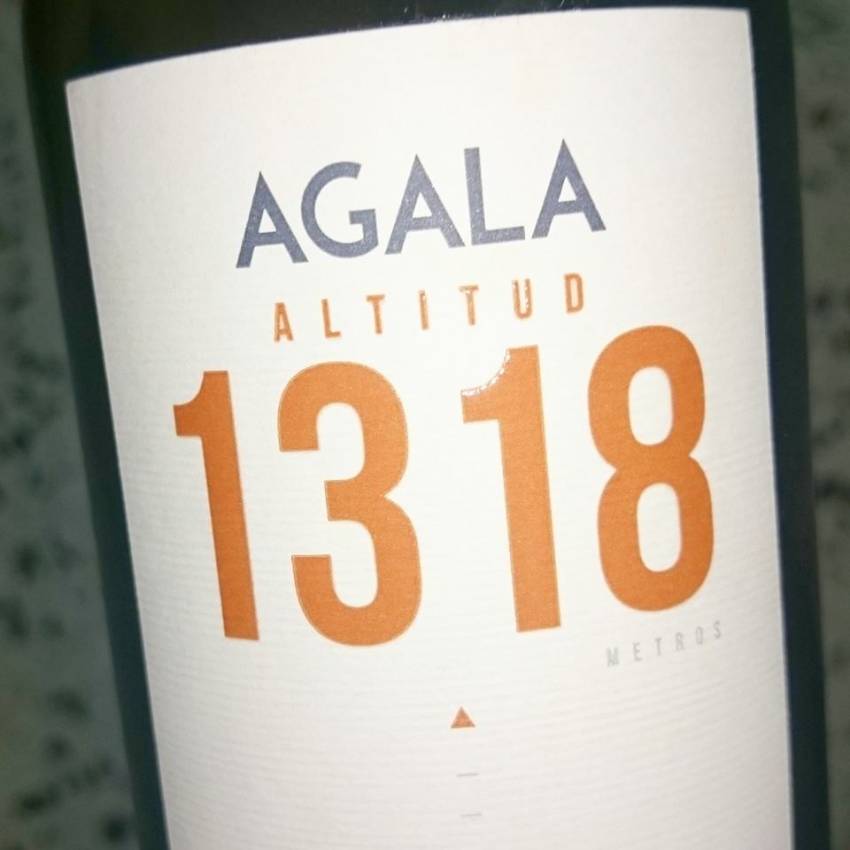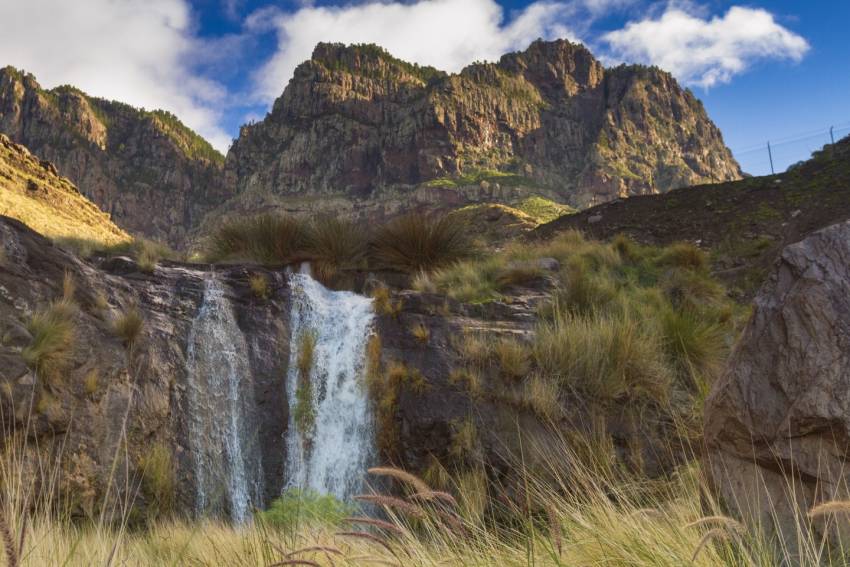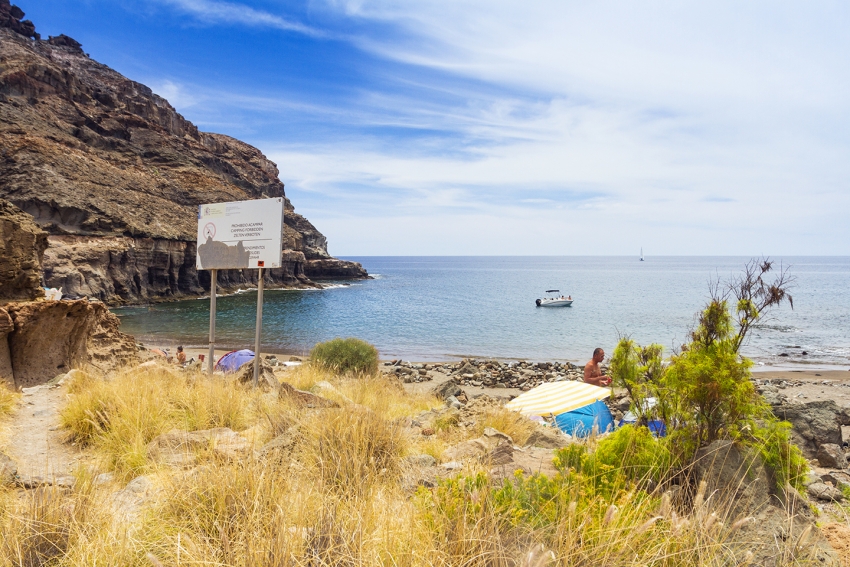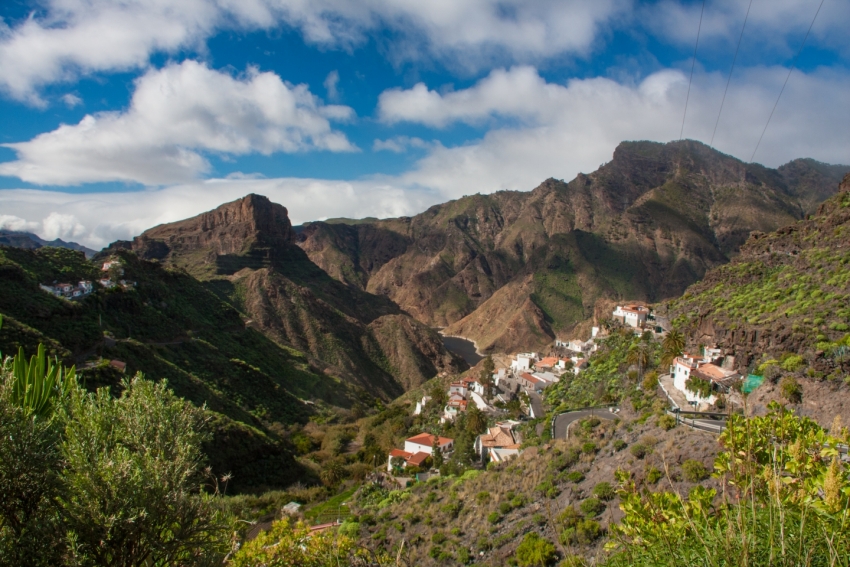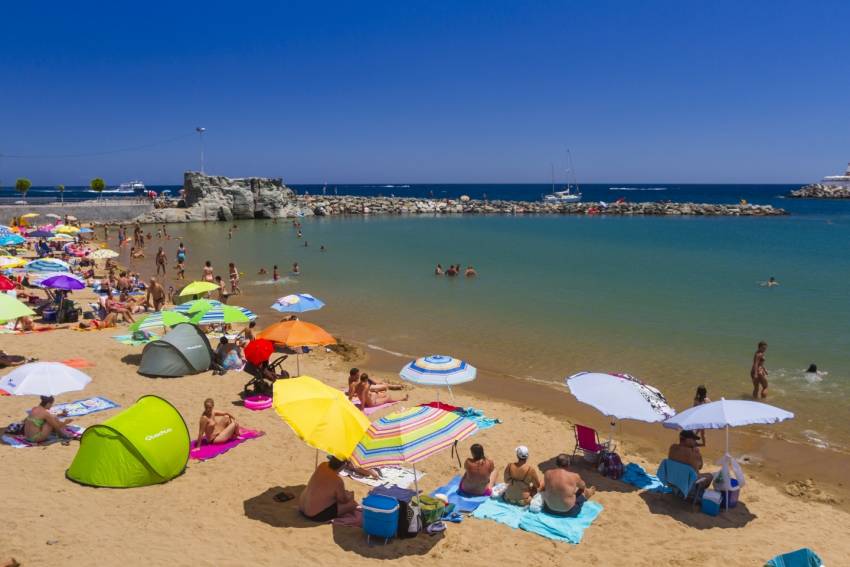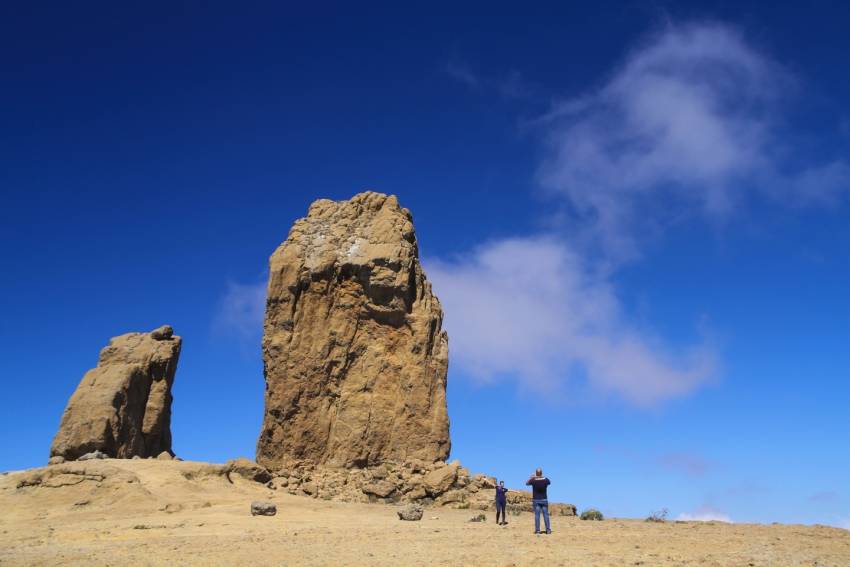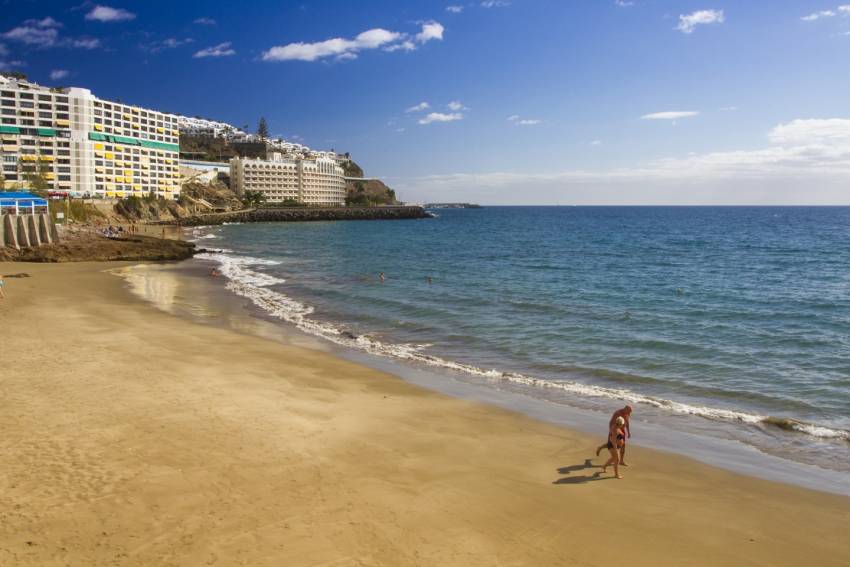Roque Nublo: Gran Canaria's Biggest Icon
Roque Nublo guards the centre of Gran Canaria but is surprisingly approachable for an icon: you can walk right up to it and just sit down. With a few ropes and a lot of courage, you can even climb it.
The Sunniest Places In Gran Canaria
Gran Canaria gets an average of 320 sunny days every year but it's a high island with lots of microclimates so the weather varies quite a bit. Here's our guide to picking the sunniest spots.
Bus Travel From San Agustín
San Agustín resort is a sleepy place but has good bus links with Playa del Inglés, Maspalomas and Las Palmas. The buses use the main resort road so find the nearest stop and use our bus line guide below to pick the right one.
Bus Travel From Puerto Rico
Local bus travel from Puerto Rico resort is easy: Just go to the bus station in the centre of the resort, pick a blue bus and pay on board.
Pebbles and Peace at Gran Canaria's Playa del Aguila
Playa del Aguila is a long way from most people's idea of a south Gran Canaria beach: quiet, pebbly and almost completely local. And that's how its fans want it to stay.
Things to do in Puerto Rico
Besides the beach, and the other beach at Amadores, there's plenty to do in Puerto Rico. It's the island's busiest resort and you can do anything from absolutely nothing to driving a Ferrari.
Getting From Gran Canaria Airport to Puerto Rico
Puerto Rico resort is 70 kilometres from the airport but transport links are good and the motorway journey takes less than an hour. Your transport options if you dont have a transfer are local bus, taxi or private tranfer service.
New Dunes Mirador For Maspalomas
Gran Canaria Wines: Robust Frontón de Oro Made the New York Times
"Not without tannins" said the New York Times review of this Gran Canaria red made with local listan negro grapes. It was right: Fronton has a hint of wood resin from the oak barrels but also enough fruit and herby notes to make it a great value Gran Canaria red.
Gran Canaria Wines: Agala 1318 Altitud (was) Sex in a Bottle
The Winery
The Agala winery is called Bodegas Bentayga. It's between Tejeda and Artenara and at up to 1318 metres above sea level it's one of the highest in Spain. The vines grow on small terraces on steep terrain and experience a vast range of temperatures. This area of Gran Canaria gets snow during cold winters and can reach over 40ºC during hot summers.
As with most Canarian wineries, Bentayga grows local grape varieties and hand picks the grapes: 1318 is made with a blend of Albillo and Vijariego.
Visits are possible but only from Monday to Friday, minimum six people and 72 hours notice. They cost 8 euros per person and include the chance to buy wine at bodega prices. Book here.
Agala 1318 is available in good wine shops and at the wine stall in the Santa Brigida weekend market.
2021 reviewed of oaked Agala Altitud dry white wine
This wine has been one of the best Gran Canaria whites for several years. Grown in South Central Gran Canaria, it had that zing you get from blasting white wine grapes with the extremes of temperature and climate (snow to 40C) you get at over 1000 metres above sea level.
Back in 2015 we reviewed it as "a floral nose with apricot and a touch of sweetness. In the mouth, it is dry but rich with well-balanced acidity. You get intense fruit and flowers, and a floral finish with a little bitterness".
It was all about the blossom!
The concept has evolved since then and this wine now spends time sobre lías in French oak barrels.
Oak and dead yeast add intensity and depth of flavour at the expense of freshness. But is it worth all that extra effort? Can you take an excellent "drink now" Canary Islands wine and turn it into something deeper? Why would you want to?
Oak, melon and banana on the nose. Quite exciting at first sniff but there's a tired hint to the wood after a few more.
Good acidity in the mouth from the vijariego, richness from the albillo. A hint of butter and vanilla from the oak and lías. Melon and banana.
Blah blah blah!
Bring back the old version we say. The oak and butter don't make up for the lost blossom and freshness.
Check our latest Gran Canaria and Canary Islands wine reviews on our Canary Islands Wines Facebook Group.
5 Good Reasons To Stop In Santa Brigida
Santa Brigida in north Gran Canaria's used to be the British colony's summer retreat from the heat in Las Palmas. Now it's a wealthy hill town with a pretty church and a popular weekend market. If you're heading up to the cumbres from Las Palmas, stop at Santa Brigida for breakfast churros or lunch and wine (or beer).
Raining In Gran Canaria? Rent A Car And Go Waterfall Hunting
If you're in Gran Canaria and it's raining don't sit by the pool pining for the sunshine: it'll be back sooner than you think. Instead, take advantage of the rain and get up into the highlands to see one of Gran Canaria's rarest and most spectacular natural events.
Wind And Wave Alert For Gran Canaria
Winter just won't give up this year in Gran Canaria and the Canary Islands. The islands are on alert from high winds and big waves on Tuesday 24th and Wednesday 25th February.
Gran Canaria is not expected to get the worst of the waves or the wind but is expected to take a battering on Wednesday with gusts up to 65km per hour.
Please stay away from the shore on rocky coasts and don't walk near drop-offs up in the mountains.
Detailed info in Spanish here
Meloneras: The Other Maspalomas Beach
Meloneras beach at the far end of the Meloneras seafront boulevard is a small, golden beach with a strip of restaurants just by the sand.
Tiritaña Beach: South Gran Canaria's Pristine Cove
Tiritaña beach is like a mini version of Güi Güi; you get the hike through a pristine valley and the deserted beach at the end, but it's all just 15 minutes from the road.
Gran Canaria Secrets: Spectacular Spots That Nobody Visits
We covered Gran Canaria's Top Ten Unmissable Spots here, but had to leave lots out; Here're some of the great places in Gran Canaria that don't get the crowds.
Sunshine and Seafood at Puerto de Mogán Beach
Puerto de Mogán beach is as calm and sunny as it gets. With golden sand, a strip of bars and restaurants right by the sand and all the charm of Puerto Mogán marina right next door, it's a favourite for locals and visitors.
Iconic Gran Canaria: The Bits You Have To See
Once you start getting to know Gran Canaria you find beautiful spots all over the place. But if you only have a week to see Gran Canaria and want to spend some time sunbathing, here's our guide to the island's must-see iconic spots.
Don't Go To Horrible Patalavaca Beach (We're Joking: It's Great)
Patalavaca beach must be horrible. That's why nobody has ever heard of it and nobody goes to it. Except that it isn't. It's one of south Gran Canaria's best beaches.
Gran Canaria's Top Teeny Tiny Beaches
Sometimes what you want is a beach small enough that you don't have to decide where to put your towel. Of the 100+ beaches in Gran Canaria, here's our pick of the teeny tiny ones.
Gran Canaria Info recommends:
- Default
- Title
- Date
- Random

